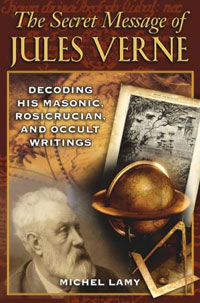Prolific author and pioneer of the science fiction novel, Jules Verne also possessed a hidden side that was encrypted into all his works--his active participation in the occult milieu of late-nineteenth-century France. Among the many esoteric secrets to be found are significant clues to the Rennes-le-Chateau mystery, including the location of a great treasure in the former Cathar region of France and the survival of the heirs to the Merovingian dynasty. Verne’s books also reveal Rosicrucian secrets of immortality, and some are constructed, like Mozart’s The Magic Flute, in accordance with Masonic initiation.
The passe-partout to Verne’s work (the skeleton key that is also the name of Phileas Fogg’s servant in Around the World in Eighty Days) lies in the initiatory language he employed to inscribe a second or even third layer of meaning beneath the main narrative, which is revealed in his skilled use of word play, homonyms, anagrams, and numerical combinations. The surface story itself is often a guide that tells the reader outright what he or she should be looking for. Far from innocuous stories for children, Verne’s work reveals itself to be rich with teachings on symbolism, esoteric traditions, sacred geography, and the secret history of humanity. Это и многое другое вы найдете в книге The Secret Message of Jules Verne: Decoding His Masonic, Rosicrucian, and Occult Writings (Michel Lamy)
